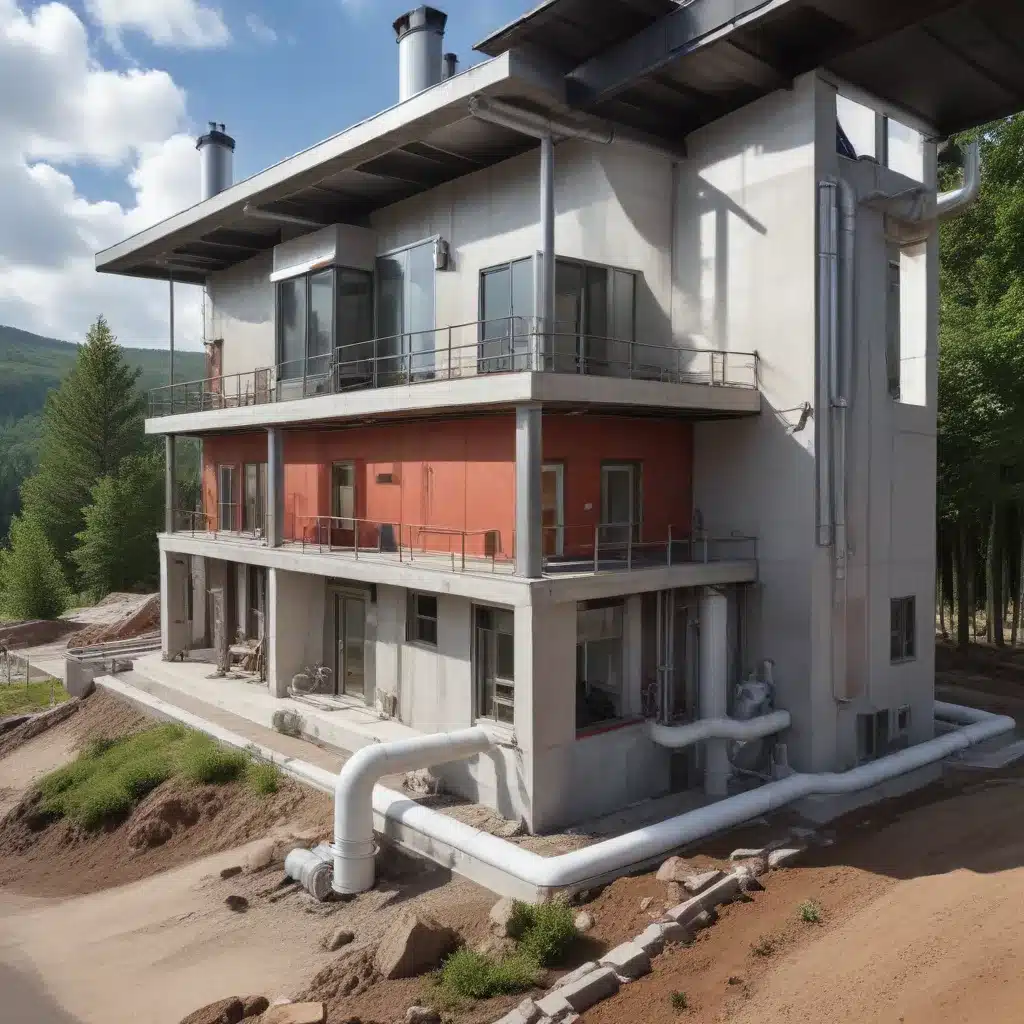
As Europe rapidly transitions toward a decarbonized future, the role of geothermal energy in heating and cooling buildings is emerging as a sustainable, cost-effective solution. Geothermal—the natural heat beneath the earth’s surface—offers a reliable, renewable alternative to traditional fossil fuel-based systems, aligning with the continent’s ambitious net-zero emissions goals.
Geothermal Energy Utilization
At its core, geothermal energy taps into the planet’s natural thermal reservoirs, either near the surface or deep underground. This reliable, consistent heat source can be harnessed through innovative technologies to provide heating, cooling, and even electricity generation for residential, commercial, and district-scale applications.
Principles of Geothermal Technology
The fundamental principle behind geothermal energy utilization is the relatively constant temperature of the subsurface, which remains largely unaffected by seasonal variations. This thermal stability allows for the efficient extraction and transfer of heat, using specialized ground-source heat pump (GSHP) systems.
GSHPs work by circulating a fluid, typically water or a refrigerant, through a closed-loop system of underground pipes. In the winter, the fluid absorbs heat from the ground and transfers it into the building. In the summer, the process is reversed, with the fluid extracting heat from the building and dissipating it back into the ground, effectively using the earth as a thermal battery.
Geothermal Resource Exploration
The success of geothermal projects hinges on the thorough assessment and mapping of subsurface geological conditions. SLB, a leading energy technology company, leverages its extensive knowledge of the subsurface to support geothermal development worldwide. By combining innovative science, engineering, and digital solutions, SLB helps building owners, municipalities, and nations unlock the full potential of their geothermal resources.
Heating and Cooling Applications
The versatility of geothermal energy extends beyond its ability to generate electricity; it also offers highly efficient and sustainable solutions for heating and cooling buildings, both in new constructions and existing infrastructure.
Residential Building Integration
In the residential sector, ground-source heat pumps are gaining traction as a clean, cost-effective alternative to traditional HVAC systems. These systems can cover up to 100% of a building’s thermal comfort needs, reducing energy costs and greenhouse gas emissions by up to 90% compared to conventional fossil fuel-based heating and cooling.
Commercial Building Integration
The benefits of geothermal energy extend to the commercial and industrial sectors as well. Large-scale buildings, campuses, and facilities can integrate geothermal district heating and cooling systems, which leverage a network of interconnected ground-source heat pumps to efficiently distribute thermal energy. These systems not only reduce carbon footprints but also offer long-term cost savings and enhanced energy security.
District Heating and Cooling
Beyond individual buildings, geothermal energy is well-suited for district-level heating and cooling solutions. By leveraging a centralized geothermal system to serve multiple structures, communities can achieve significant economies of scale and optimize energy efficiency. This approach is particularly prevalent in Europe, where district energy networks are becoming increasingly common in urban areas.
Environmental and Sustainability Aspects
Geothermal energy’s inherent sustainability and environmental benefits make it a key contributor to Europe’s transition toward a greener future.
Greenhouse Gas Emissions Reduction
One of the primary advantages of geothermal heating and cooling is the significant reduction in greenhouse gas emissions. Unlike traditional fossil fuel-based systems, geothermal technology produces virtually no direct emissions, aligning with the European Union’s ambitious climate targets.
Energy Efficiency and Conservation
Geothermal systems also excel in terms of energy efficiency, utilizing the natural thermal properties of the subsurface to minimize energy consumption. By leveraging the earth’s stable temperatures, these systems can reduce the overall energy demand for heating and cooling, contributing to the broader goals of energy conservation and sustainability.
Renewable Energy Integration
As Europe continues to expand its renewable energy capacity, geothermal heating and cooling can seamlessly integrate with other clean energy sources, such as solar and wind power. This synergistic approach enhances the overall resilience and sustainability of the energy system, reducing reliance on fossil fuels and promoting a truly decarbonized future.
Economic Considerations
While the upfront capital costs of geothermal systems can be higher than traditional HVAC alternatives, the long-term economic benefits often outweigh the initial investment.
Installation and Operational Costs
Advancements in drilling and installation techniques, as well as economies of scale, are driving down the costs of geothermal projects. Additionally, the operational and maintenance expenses of geothermal systems are generally lower than those of fossil fuel-based heating and cooling, providing significant cost savings over the lifetime of the system.
Incentives and Policy Frameworks
To further support the adoption of geothermal energy, governments across Europe have implemented various incentive programs and policy mechanisms. These include tax credits, grants, and favorable regulatory frameworks that make the deployment of geothermal technologies more accessible and attractive to building owners and developers.
Life-Cycle Assessment
When considering the total environmental impact and cost-effectiveness of geothermal systems, a comprehensive life-cycle assessment (LCA) approach is essential. LCA analysis takes into account the energy and emissions associated with the entire lifespan of the system, from manufacturing and installation to operation and eventual decommissioning. This holistic evaluation reinforces the long-term sustainability and economic viability of geothermal energy solutions.
As Europe continues to lead the global transition toward a decarbonized future, the widespread adoption of geothermal heating and cooling technologies will play a crucial role in achieving its ambitious climate goals. By harnessing the natural heat beneath our feet, the continent is poised to unlock a sustainable, reliable, and cost-effective energy source that will power its buildings and communities for generations to come.







